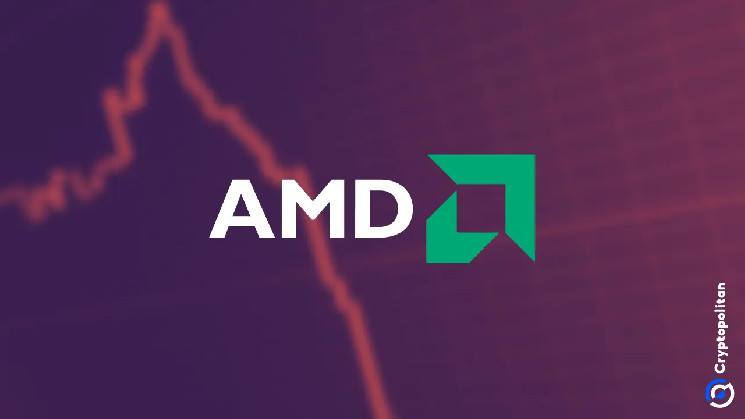
Advanced Micro Devices (AMD) was downgraded from “Buy” to “Reduce” and its price target was cut from $200 to $110, or nearly half, by analysts at HSBC on Wednesday.
The AMD stock shed 5% due to the HSBC downgrade. The analysts said the recent review was necessitated by concerns over the company’s ability to compete effectively in the AI GPU market with the likes of Nvidia. This comes as Nvidia is the strongest competitor in the market and still dominates the sector.
Several analysts downgraded AMD
HSBC analyst Frank Lee noted the weak demand for AMD’s MI325 GPU and the possibility of delays in bringing a competitive rack solution to the battle against Nvidia’s NVL platform. The analysts slashed AMD’s revenue expectation for the 2025 AI GPU from $12.3 billion to $8.1 billion, well below a consensus of $9.5 billion.
“Despite a 24% correction in AMD’s share price over the last three months, we still see downside.”
Lee.
HSBC analysts also said there were worries around AMD’s slowed-down non-AI data center revenue growth and client momentum, forecasting that client revenue will be up just 12% year on year in fiscal 2025 versus 44% growth in fiscal 2024.
Also noted were doubts about the company’s AI offerings to match Nvidia until the MI400 platform launch, which is expected before the end of 2025 or early 2026. AMD’s roadmap includes the MI350 GPU launch in late 2025.
According to data from S&P Global Market Intelligence, the stock saw significant sell-offs in December’s trading, as the semiconductor company’s share price closed out the month down 11.9%.
The company’s downgrade ratings began last month when on December 9, the Bank of America downgraded the stock’s rating from buy to neutral. AMD’s share price target was revised to $155 per share from $180. On December 16, Truist also lowered its AMD price target. With the investment company cutting its one-year price forecast from $180 to $155 per share and maintaining a hold rating on AMD stock.
On December 10, a new report on AMD by Wolfe Research noted that AMD’s revenue was to come in roughly $3 billion, below average Wall Street estimates. The reason for Wolfe’s review was its concern about AMD’s progress in AI, which it anticipated to be weaker.
Wolfe’s analysts anticipate AMD to have trouble going into its anticipated quarterly report this month. Resultantly, the investment firm expected AMD to record only $7 billion in AI revenue in 2025.
Competition from peers like Nvidia would be a threat to AMD
A note maintaining an equal-weight rating on AMD stock was published by Morgan Stanley on December 20, and the investment company revised downwards its 12-month price target on the stock from $169 to $158 per share.
Morgan Stanley stated that the possibility of tough competition from Nvidia to limit the company’s growth opportunities in the AI space was high.
Despite all the reports, AMD began the year with about 4% up to January 8, but a new downside expectation and investor consideration of macroeconomic risk factors wiped out the gains, leaving the stock trading almost flat in 2025.
However, before markets opened on January 8, a rare double downgrade was issued by HSBC for the AMD stock rating as the bank lowered its rating from buy to reduce as well as cut its 12-month price target to $110.
Nvidia has continued to rule the market for advanced processors for data centers, and this has left AMD heading into 2025 with lowered expectations. Some analysts are however worried that AI will not become the powerful near-term catalyst for the business that had previously been expected.
Sentiment in the market is that it is still too early to write off AMD, and it’s possible that recent pressures for the stock will help set the stage for an explosive comeback rally.
